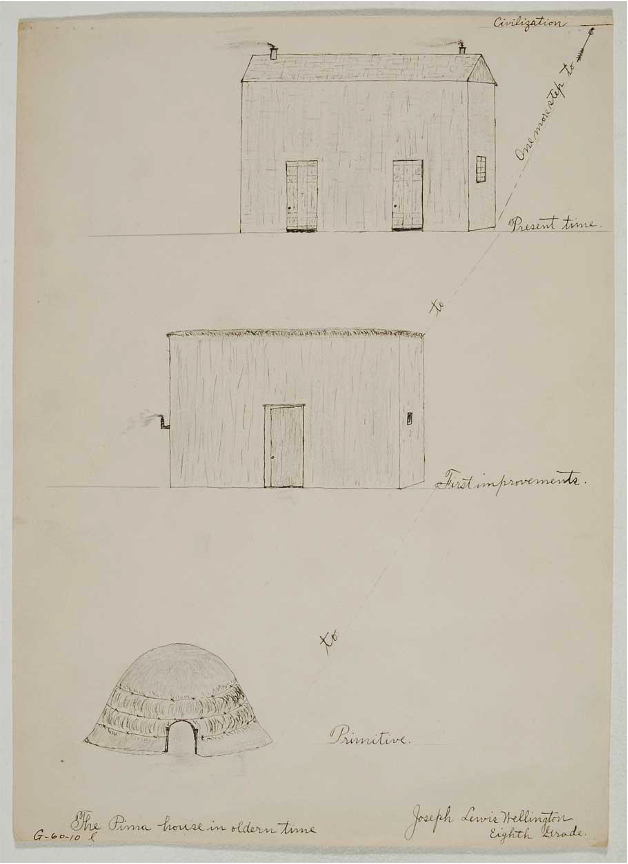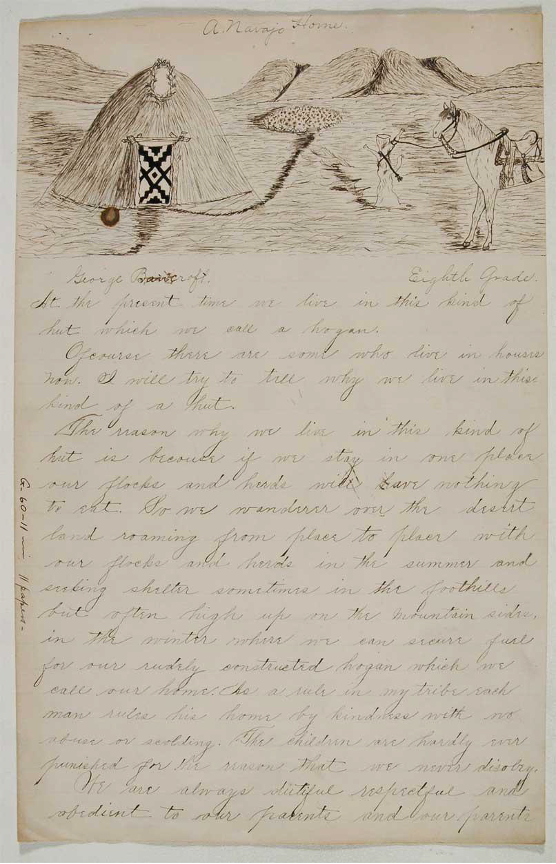-
Membership
Membership
Anyone with an interest in the history of the built environment is welcome to join the Society of Architectural Historians -
Conferences
Conferences
SAH Annual International Conferences bring members together for scholarly exchange and networking -
Publications
Publications
Through print and digital publications, SAH documents the history of the built environment and disseminates scholarship -
Programs
Programs
SAH promotes meaningful engagement with the history of the built environment through its programsMember Programs
-
Jobs & Opportunities
Jobs & Opportunities
SAH provides resources, fellowships, and grants to help further your career and professional life -
Support
Support
We invite you to support the educational mission of SAH by making a gift, becoming a member, or volunteering -
About
About
SAH promotes the study, interpretation, and conservation of the built environment worldwide for the benefit of all
Expanding the Media of Architectural Research: Native Boarding School Assignments and Architectural Settler Colonialism
Maura Lucking, a Ph.D. candidate at UCLA Architecture and Urban Design, received the 2021 Gill Family Foundation Dissertation Research Fellowship for her dissertation project, “American Artisan: Design and Race-Making in Industrial Education, 1866–1924."
As has been the case for many scholars, my dissertation research was fundamentally changed by Covid-19. While it quickly became clear that my ability to travel and access certain archives would be postponed, what I wasn’t able to anticipate were the ways in which research in the pandemic age would push me to develop new analytical methods in order to work with the materials that I did have access to. My research traces a settler colonial history of the U.S. Land Grant college program, including federally funded schools for Native American and African American students in that legacy and foregrounding the relationship between the land dispossession and exploitative labor practices that determined campus designs and the racially segregated industrial curricula that took place there.
While I had planned to spend extensive time on-site at my case study schools, Covid meant pivoting to email exchanges with incredibly helpful and accommodating archivists, often supplementing those primary archives with materials at other institutions with the resources to make materials available digitally. Ultimately, it has shifted my emphasis on small-scale student work and issues of representation within these schools’ curricula in addition to spatial analysis of campus buildings and often difficult-to-access and digitize drawing sets. I am grateful for the support of SAH's Gill Family Foundation Dissertation Research Fellowship for the ability to have such materials digitized for closer study at home.
In part, this pandemic-mandated shift has also pushed me to consider how architecture figured into those schools’ curricula beyond design and building programs—that is to say, not only through labor but through ideology. These connections often took place obliquely, thanks to pedagogical theories of correlation, as instructors referenced architectural typologies and building materials in the teaching of say, essay-writing, world geography, or geometric proofs. The racialized thinking of Progressive era pedagogues went that such concrete, material examples were helpful for students unaccustomed to or racially incapable of abstract thinking. Building on the work of other historians on nineteenth-century race-science and architectural style, my research helps us understand how architecture was used as a metric of civilization in these schools (and, therefore, deculturalization and assimilation).
The following two drawings, from the Minnie Linton collection of materials from Indian Schools at the Autry Museum of the American West, help to illustrate my point. They are taken from essays completed in 1899 by two Indigenous eighth-grade students at the Sherman Institute, an off-reservation boarding school in Riverside, CA. While they don’t ultimately figure directly into my dissertation, which focuses on older students at a series of different case studies, they have proven integral to shaping the way that I think about architecture’s role as a knowledge system in practices of cultural genocide and attuning myself to the subtle forms of resistance to or refusal of that settler colonial project that we can find in the colonial archive.


From top: Drawing by Joseph Lewis Wellington (Pima), Eighth Grade, Sherman Institute; George Bancroft, “A Navajo Home” Eighth-Grade Report, Sherman Institute. Written exams and essays created by 7th- and 8th-grade students from the Sherman Institute in Riverside, California, Folder 3, Minnie H. Linton Collection Collection of Indian School Papers & Drawings, before 1919, MS.1316, Autry National Center, Braun Research Library.
It seems that the students were asked to write something reflecting on traditional and modern forms of housing and their relationship to civilization, to their culture, and to the future development or improvement of both their land and their race. These are all reasonably common tropes for Indian education in the late nineteenth century, but it’s unusual to see them worked out so materially, referencing built structures in a way that both is and is not metaphorical. The resulting drawings and short essays address the development of housing amongst the Pima people and the Navajo or Diné, both historically and in the present time.
The two students take the assignment in quite different directions, one emphasizing transformation of architectural typologies and the other arguing for the appropriateness of their housing type to their lifeway and culture. The first, by Joseph Lewis Wellington, starts with a wickiup, a brushwood round house typical of numerous nomadic peoples across the southwest, but labeled as “primitive.” We then see a literal trajectory of development traced, first to a simple, single-room structure, which looks like it could be a mixture of sod or rammed earth with timber, and finally to a timber framed, multi-room structure with a pitched roof, a fully westernized home. He closes with “one more step to go…” It’s illustrating a process of transformation, or what was often called improvement, visually. Architecture as a visible index of racial development—both biologically and in reference to Native peoples’ acceptance of the single-family home and allotment homestead in rejection of communal living arrangements, on traditional homelands or reservations. In some ways, this first drawing is an illustration of the ideal outcome of such an assignment, then.
The second drawing from the Linton collection opens up a different direction, however: the possibility of refusal, however subtle, of this narrative of racial improvement and civilization by eighth-grade student George Bancroft. To find this counternarrative to the official government curriculum, we must carefully read between the drawing and its accompanying text. It depicts a naturalistic rather than schematic representation of a hogan (hooghan), a dwelling and ceremonial building type commonly built by the Navajo people from the fifteenth to the early twentieth century. The dome-shaped structure, an interlocking core of Ponderosa pine or cedar plastered with mud and bark, isn’t depicted as an isolated specimen as in Wellington’s drawing, but rather is integrated into a scene that emphasizes its everyday use, as well as the visual resonance between the dwelling and the geological forms of the monadnocks beyond, sacred sites for the Navajo on the Colorado plateau.
Bancroft’s text argues for, rather than against the Hogan, explaining its role amongst many different forms of dwelling, living, and sustenance within his family: “The reason why we live in this kind of hut is because if we stay in one place our flocks and herds will have nothing to eat. So we wander over the desert land roaming from place to place with our flocks and herds in the summer and seeking shelter sometimes in the foothills but often high up on the mountainsides in the winter, where we can secure fuel for our rudely constructed Hogan which we call our home.”
Apparently, the hogan could even explain well-behaved children, as his description of the housing typology was followed immediately by an explanation of his experience of life within it: “As a rule, in my tribe each man rules his home by kindness with no abuse or scolding. The children are hardly ever punished for the reason that we never disobey. We are always dutiful, respectful, and obedient to our parents and they are always considerate, kind, and thoughtful of us.”
It is only a throwaway line at the end of the essay that (alongside its acquisition and filing alongside Wellington’s essay and other student work) makes it clear that the assignment was intended to address the relationship between housing and civilization: “Since the last several years we are realizing about civilization, so we have begun to seek for civilization of the future.” Assignment accomplished, but not really. The total picture depicts a eulogy to a lifeway quickly being eroded on multiple fronts: both the disappearance of Indigenous building typologies based on new federal guidelines that restricted funding for home loans and other housing programs to standardized government plans, and the alienation of children from their parents and communities based on their removal to faraway boarding schools like Sherman. It was no small thing for an eighth-grade student to acknowledge these losses in his interaction with authority figures, however obliquely. Student works like Bancroft’s open up a window for architectural historians into the complex entanglement of architecture’s politics and participation in these settler colonial cultural and political histories.



Leave a commentOrder by
Newest on top Oldest on top